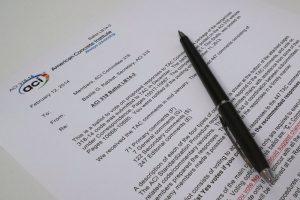
ACI 318-14: Technical Changes
In this third installment of our coverage on the significant changes in ACI 318-14, the technical changes in the upcoming new edition of the concrete code are presented. The first two installments – a cross-reference table showing how the 2014 edition of the code has been reorganized compared to its 2011 edition, and the nontechnical changes made to the 2014 edition of the code can be found here and here.
Technical Changes. In view of the effort involved in the reorganization, the initial expectation was that the number of technical changes in ACI 318-14 would be minimal. However, it did not end up that way. ACI 318-14 does contain a number of significant technical changes, some of the most important of which are found in Chapter 18, Earthquake Resistant Structures, and Chapter 19, Concrete: Design and Durability Requirements. Some of the more significant changes are indicated below.
Provisions in ACI 318-11 and earlier editions, which explained basic statistical considerations in mixture proportioning, are no longer found in ACI 318-14. Instead, ACI 301-10, Specifications for Structural Concrete, is referenced.
Requirements for post-tensioning ducts and grouting have also been removed as being outdated. The Commentary now provides specification guidance.
Minimum requirements for an acceptable finite element analysis for structural concrete members are now given in Chapter 6.
An acceptable alternative design procedure for slender spandrel beams of precast concrete is now given in Chapter 9.
Important technical changes in Chapter 18, Earthquake Resistant Structures, include the following:
- For ASTM A615 Grade 60 bars used as longitudinal reinforcement in special moment frames and special shear walls, ACI 318-14 now requires the same minimum elongation as ASTM A706 reinforcement.
- Design requirements for special shear walls have changed in significant ways in view of lessons learned from the Chile earthquake of 2010.
- Confinement requirements for columns of special moment frames, and for columns not designated as part of the seismic-force-resisting system in structures assigned to Seismic Design Categories D, E, and F, with high axial load or high concrete compressive strength are significantly different.
- For beam-column joints of special moment frames, clarification of development length of beam longitudinal reinforcement that is hooked, requirements for joints with headed longitudinal reinforcement, and restrictions on joint aspect ratio are new.
- There are new restrictions on the use of headed reinforcement to make up hoops.
Substantive changes have been made in concrete durability requirements, which are now located in Chapter 19.
The definition of yield strength of high-strength reinforcement (fy ˃ 60,000 psi) in Chapter 20 is now, for the first time, the same as that in ASTM specifications.
Mechanical or welded splices with strengths below 125% of the yield strength of the spliced reinforcing bars are no longer permitted (Chapter 25). The associated stagger requirements have been deleted. Thus there is no longer a need to specify “full” mechanical or “full” welded splices.
Current Status. The public comment period on ACI 318-14 closed on June 17, 2014. ACI Committee 318 met in Charleston, SC on August 4-5, 2014 to finalize committee responses to the public comments. Steps remaining at the end of the meeting were:
1) Approval by the ACI Technical Activities Committee (TAC) of substantive changes made to the public comment version of ACI 318-14 in response to the public comments.
2) Posting of the public comments and committee responses to the public comments on the ACI website
3) Approval of the TAC-approved document by the Standards Board of ACI.
Plans are for ACI to have ACI 318-14 available in print for sale at the ACI Convention in Washington, D.C., scheduled for October 26-29, 2014.